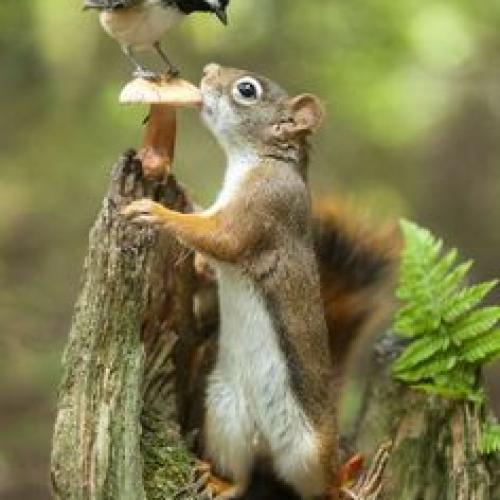Introduction:
In the bustling metropolises that define our modern landscapes, amidst the towering skyscrapers and bustling streets, lies an unexpected source of sustenance - urban foraging. Far from the traditional image of foraging in pristine forests, urban foraging involves harvesting edible plants, fruits, and even fungi from the overlooked corners of city environments. It's a practice that not only reconnects people with nature but also offers a sustainable way to supplement diets and reduce food waste. Let's delve into the art and sustainability of urban foraging.
Exploring the Urban Wilderness: Urban foraging involves scouring city landscapes for edible treasures. Parks, abandoned lots, roadside verges, and even city center planters are potential hunting grounds. Nature has a knack for thriving in unexpected places, and city environments are no exception. Wild plants like dandelions, purslane, and lamb's quarters often flourish in urban settings, presenting nutritious options for foragers.
Ethical Foraging Practices: While urban foraging offers a plethora of edible finds, it's crucial to practice ethical harvesting. Foragers should prioritize sustainability by following these principles:
- Respect Nature: Harvest only what you need, leaving behind enough for the plant to regenerate and for other foragers and wildlife to enjoy.
- Know Your Plants: Familiarize yourself with local flora and fauna to avoid picking toxic or endangered species. Seek guidance from experienced foragers or reputable resources.
- Mindful Harvesting: Avoid foraging in areas subjected to pollution, pesticides, or other contaminants. Opt for organic, untouched locations for a safer harvest.
- Tread Lightly: Minimize disruption to the environment and wildlife habitats. Stick to designated paths and avoid trampling delicate vegetation.
Benefits of Urban Foraging: Urban foraging offers a myriad of benefits, both for individuals and the environment:
- Nutritional Diversity: Wild plants often boast higher nutritional content than their cultivated counterparts, offering a diverse array of vitamins, minerals, and antioxidants.
- Sustainable Eating: By utilizing abundant wild resources, urban foraging reduces reliance on industrially produced food, lowering carbon footprints and supporting local ecosystems.
- Food Security: In an era marked by food insecurity, urban foraging provides a free and accessible source of nutrition, particularly for marginalized communities with limited access to fresh produce.
- Connection to Nature: Engaging in urban foraging fosters a deeper connection to the natural world, encouraging mindfulness, appreciation, and stewardship of urban green spaces.
Challenges and Considerations: While urban foraging holds promise, it's not without its challenges and considerations:
- Safety Concerns: Urban environments may harbor pollutants and contaminants, posing risks to foragers. Thoroughly wash and inspect foraged items, and avoid areas with known pollution issues.
- Legalities: Foraging regulations vary by location, and certain areas may prohibit or restrict harvesting. Always obtain permission when foraging on private property, and familiarize yourself with local laws and regulations.
- Overharvesting: Intensive foraging pressure can deplete natural resources and disrupt delicate ecosystems. Practice restraint and moderation to ensure the sustainability of wild populations.
Conclusion:
Urban foraging offers a tantalizing glimpse into the edible abundance that surrounds us, even in the most unlikely of places. By embracing this age-old practice, we can nourish our bodies, connect with nature, and foster sustainable food systems within our urban landscapes. However, it's essential to approach foraging with respect, mindfulness, and a commitment to ethical harvesting practices. In doing so, we can reap the bountiful rewards of the urban wilderness while safeguarding its vitality for generations to come.








